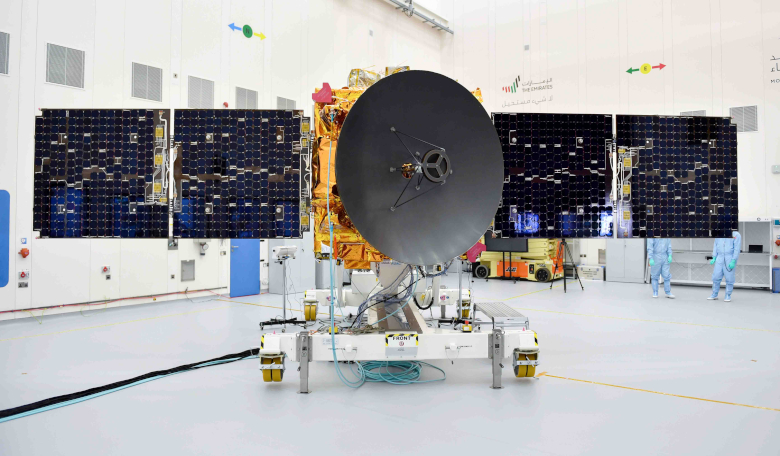Moments from launching their country’s first interplanetary probe, scientists, government officials and diplomats representing the United Arab Emirates’ space program were already looking ahead to future spacefaring plans: a spaceport Virgin Galactic is eyeing, in-space agriculture with Nanoracks, a Mars sample-return mission no one’s ever heard of — if one UAE engineer gets her wish, that is — not to mention the 100-year dream of establishing the first human settlement on the red planet.
The Hope probe took off from Japan’s Tanegashima Space Center on July 19 and arrives at its destination in February in time for the UAE’s 50th anniversary. If the satellite’s six-year creation serves as any indication, maybe the 100-year goal of a settlement, envisioned in part to inspire new generations, isn’t so far-fetched.
The UAE’s ambassador to the United States Yousef Al Otaiba hosted a virtual ‘launch party’ on Zoom in the hour leading up to the launch.
“What should be the next logical step in our journey?” Al Otaiba asked UAE engineers who talked about their roles in the mission.
Hoor Al Mazmi, a space science engineer with the UAE Space Agency and a member of Hope’s science team, floated another audacious plan.
“For me, because our motto is ‘The impossible is possible, and we can do anything’. I think a Mars sample return would be great,” she said. “I know that NASA is already planning that, but it is something that we should also aim for because it would teach us a lot about Mars and it would teach us a lot about the universe.”
NASA Administrator Jim Bridenstine was still serving in the US House of Representatives when he first heard about Hope.
“And I don’t know that at the time I fully believed that we would be in this moment right now,” he said.
Bridenstine pointed out the science linking Hope and NASA’s Perseverance rover - Hope is meant to observe, in part, the carbon dioxide dominating Mars’ atmosphere, while an instrument aboard Perseverance will try to turn some of the poisonous gas into oxygen.
With several satellites in orbit, including its homegrown KhalifaSat, the UAE sent its first astronaut to the International Space Station in 2019 and has two more satellite launches coming up this year, said the UAE Space Agency’s Director General Mohamed Al Ahbabi. Some of the guests teased future projects they’re working on with the UAE, thanks in part to the country’s regulatory framework.
NASA’s Associate Administrator for International and Interagency Relations Mike Gold highlighted the UAE’s “extremely forward-leaning” policies and participation on the United Nations’ Committee on the Peaceful Uses of Outer Space.
Regulations enabling a potential spaceport have Virgin Galactic’s executives closely watching the progress of a potential site, said the company’s Chief Space Officer George Whitesides, who was CEO until stepping into the new role this month. Whitesides complimented the UAE’s “very rational and logical series of steps” in creating the capacity for more space activities, envisioning that the UAE ultimately “becomes a new type of center for space research where people will bring to the UAE their experiments potentially to launch into space from UAE soil.”
Nanoracks CEO Jeffrey Manber, meanwhile, foreshadowed “something that’s really revolutionary with the UAE in setting up in-space research centers”, plus an announcement “in the next few months” on a space farming plan with implications for food security here on Earth. “How can you use that to green the deserts?” Manber asked.
The UAE aims to establish the first human settlement on Mars by 2117. The rest, including Hope, are incremental steps along the way.
Al Otaiba took a moment “just to recognise that’s it’s really cool just to do this in the 50-year lifespan of a country.
“A lot of countries that have been around much longer have not been able to pull this off, but we did it because there was a vision and the resources dedicated to accomplish that vision,” he said. “We put a plan together, and then we accomplished that plan together.”











